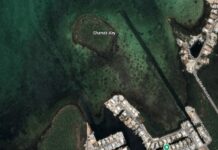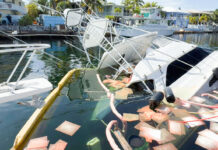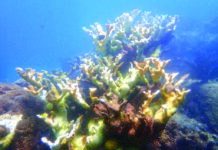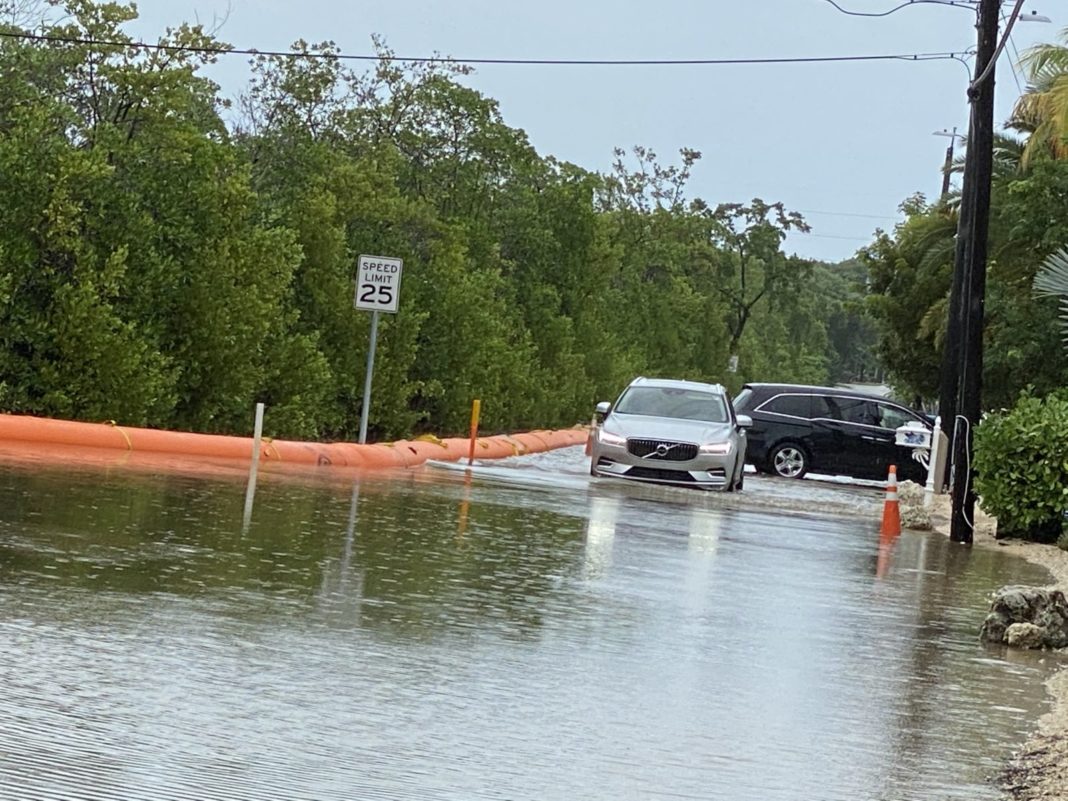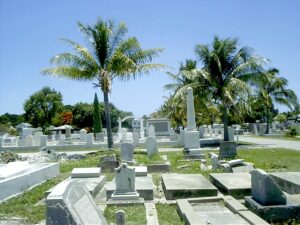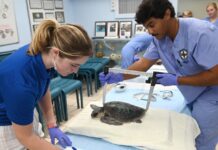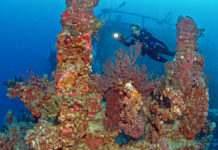At least one Key Largo community is seeing a bit of improvement after barricades were installed to mitigate saltwater on the road from tidal flooding.
As for the other community plagued by inundated roads, the temporary solution doesn’t appear to be yielding the results residents hoped for.
On Oct. 2, county crews and U.S. Flood Control officials installed 24-inch-high water filled control barriers on Shaw Drive and Adams Drive in the low area adjacent to the mangroves in Twin Lakes. Pumps were also placed at the corner of Crane Street and Shaw Drive.
Residents and county officials know the dam between the road and the bay’s tidal waters is not a permanent fix. In the words of resident Stephanie Russo and county Engineering Services Director Judy Clarke to commissioners on Oct. 21, the barrier appears to be working for the community.
“In the intersection where we typically see the deepest water, even with all the rain they’ve been having, there was about 5 inches of water on the road,” Clarke said. “Normally this time of year with king tide, if it hadn’t been held back by the barrier, we’d see 10-12 inches of standing water. It’s not perfect, but I would say it’s a successful interim solution in these areas. “
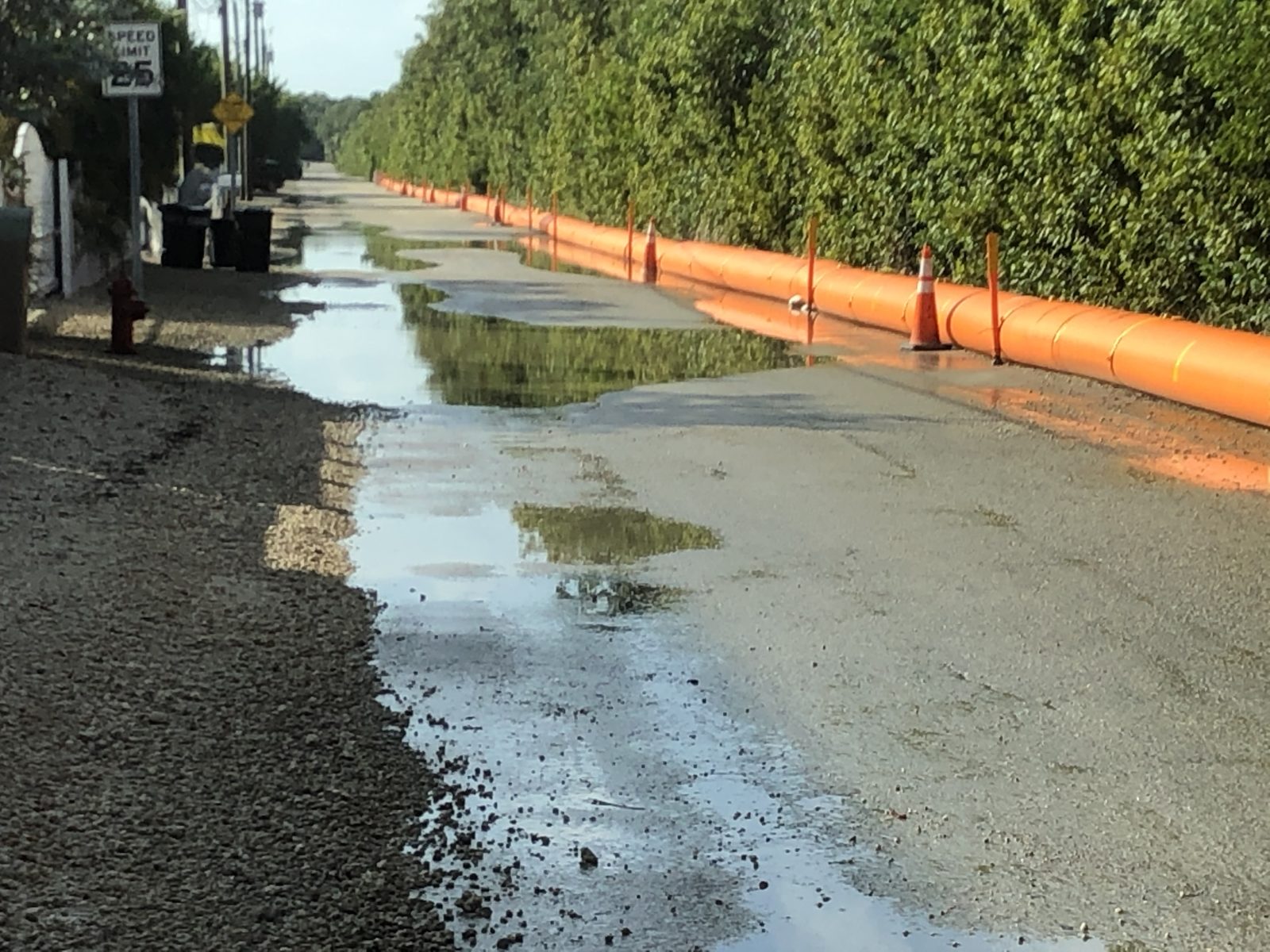
Russo took a moment to thank the county and Clarke for installing the dam that’s been “effective at preventing the water coming over the side of the road.” With less water on the road, Russo said, it’s become apparent that the saltwater is bubbling up from underground near manhole covers and telephone poles. Russo asked if there are any possible short-term remedies to shore up the spots where the water’s coming up as discussions continue over ways to fund a long-term fix in the way of drainage and road raising.
A pilot project aiming to address long-standing flood issues in the Twin Lakes community needs $7.1 million. With studies and reports complete, and time and money spent, funding is the next critical step. But as the public and commissioners heard during a Sept. 8 budget hearing, the Twin Lakes and Sands Subdivision (Big Pine Key) pilot project was in a list of infrastructure projects not currently funded.
“We continuously have saltwater on the road unfortunately mixed with rainwater since the beginning of September, so we’re still driving through saltwater,” Russo said.
Clarke said the challenge is the fact that groundwater is higher than the road surface.
“Unless we paved the whole area, it’s going to come up from shoulders and that sort of thing as well,” she said. “I think it would go sideways and come up wherever we’d have an impervious surface.”
Talks date back 10 years when concerns rose over sea level rise and the need for a resolution over inundated roads. Fast forward to late 2015 and early 2016, when Twin Lakes residents dealt with more than a month of sustained and continuous saltwater flooding.
That led the board of county commissioners to make Twin Lakes and the Sands subdivision in Big Pine Key as the pilot project to study, design and implement a solution to address flooding issues. Commissioners in January 2017 received an engineer’s report and recommendations on a design. It included elevation of roads within Twin Lakes to about 5 inches to extend the life of the road to 2040. Roads identified included Shaw Drive, Crane Street and Adams Drive. As for the Sands Division, the report recommended a road elevation to about 11 inches.
STILLWRIGHT POINT
Twelve days after Twin Lakes saw barriers go up, county crews and U.S. Flood Control descended upon Stillwright Point where they placed the orange blockers along North Blackwater Lane and Sexton Way. Crews picked a good day to install the barriers, with tidal flooding on the roads the lowest in some 30 days, resident Jan Darden noted.
Water from tidal flooding didn’t stay off the road in the days that followed. Pictures taken by resident Emilie Caldwell Stewart last week showed water covering North Blackwater Lane and Sexton Way. On Oct. 21, Stewart informed county commissioners of the result.
“This morning is just hellish. There’s just no other way to describe it,” she said. “You cannot get a small car or a standard car through. I was so hopeful a week ago today (Oct. 14), but that seems to be the reality that it’s not feasible with us.”
Stewart went on to say another month of tidal flooding “is just crazy,” and that residents inside Stillwright Point don’t “have a way of life right now.”
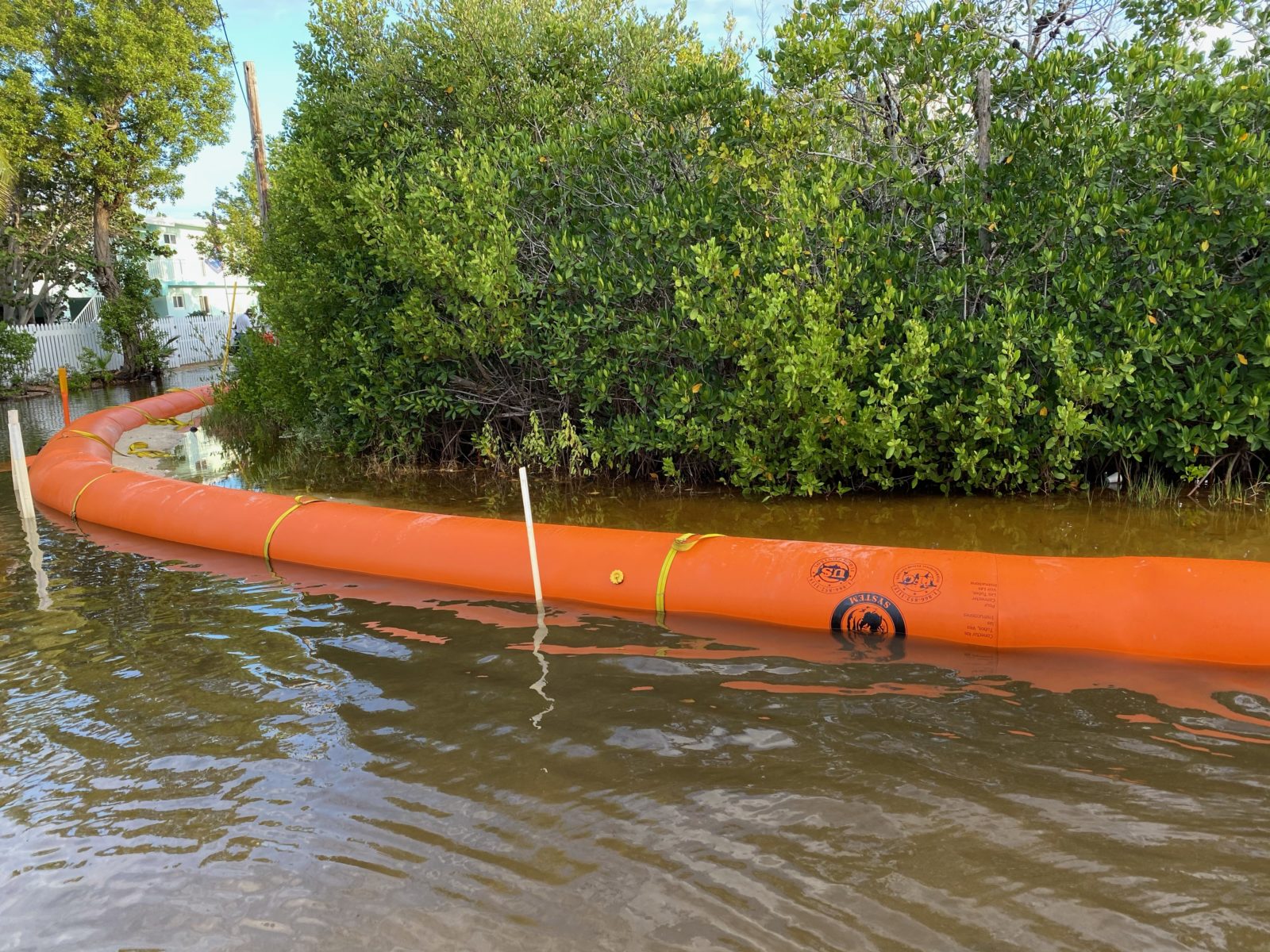
“I had a neighbor ask me, ‘I have a package to go to the post office. … Because I’m lucky enough to have gotten out to buy a Jeep, I can take it to the post office for them.”
A year ago, a little more than 90 days passed before Stillwright Point residents were able to stand in the middle of roads and streets without water touching their feet. It all stemmed from a king tide that left roads and streets inundated for months.
At times, water on roads exceeded 1 to 2 feet, causing problems for elderly and handicapped residents. Fast forward to Sept. 19, 2020, and tidal flooding returned inside the community at MM 105, bayside.
A county commission meeting in August saw input on an application for $21 million in grant funds through the Community Development Block Grant program for general infrastructure to elevate and improve drainage within the Stillwright Point subdivision, which comprises some 185 homes. The project would include reconstructing and elevating 1.5 miles of road by up to 1.75 feet or higher in some areas, installing a stormwater collection system, pump station, wet wells, pumps, piping, electrical controls, emergency generator and an injector well. An application has been submitted.
Resident George Smyth acknowledged to commissioners that residents were happy with the county’s short-term try at installing dams. As for a long-term solution, Smyth said he feels the engineering group that put the project together is leading the county down the wrong path in choosing the most expensive method. Smyth, in talks with state officials, said the proposal is “out of line with other grants.”
“We can’t go any further with our representatives in all the places, the U.S. Senate and everywhere because we’re out of line in our costs,” he said. “The only way to rectify, we feel, is to have a separate engineering group look at what’s been proposed and come up with something more responsible and innovative to be used, rather than use this moon-shot methodology of injection wells. It’s beneficial for taxpayers overall and it is much lower cost to maintain going forward.”
Clarke said the analysis and dollar figure for the project was part of the sea level rise vulnerability project countywide. She said the consultant provided a “very high level cost estimate” based on the scope of work for the Stillwright project.
“There’s no design. It’s at a very early stage. With no apologies, those levels of cost estimate are conservative. We would not on purpose pick the most expensive method. Our sea level rise vulnerability study is to evaluate any and all, and we’re proceeding with that for the county.”






